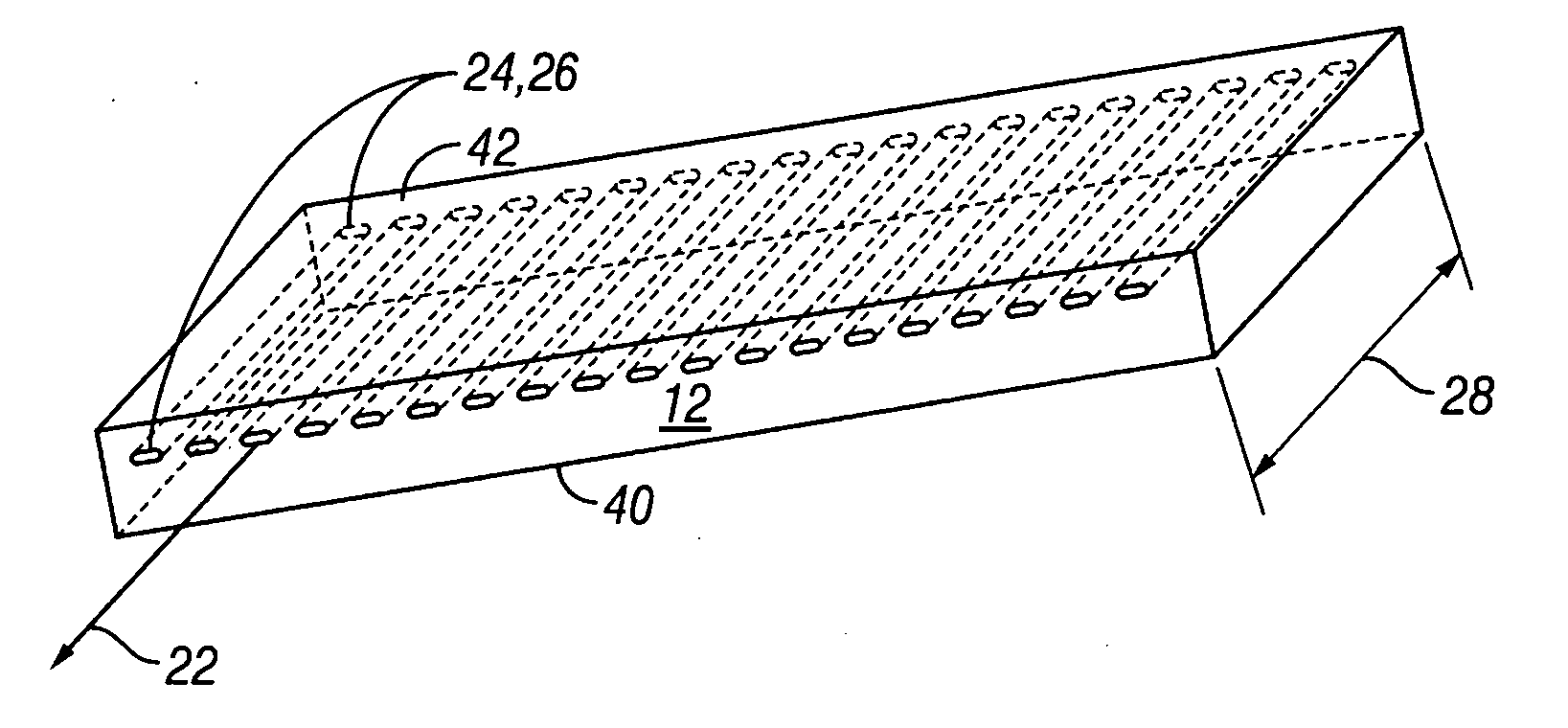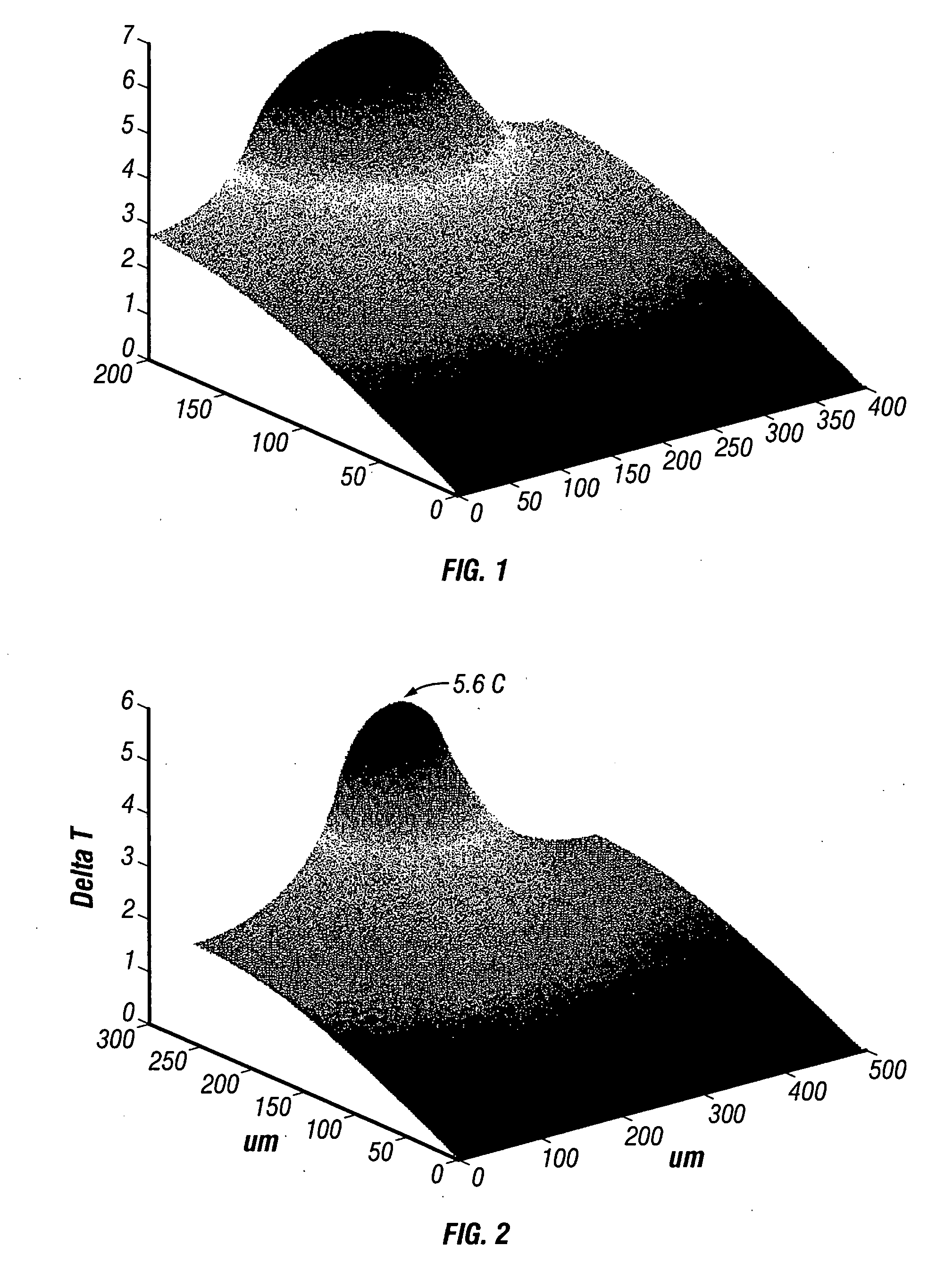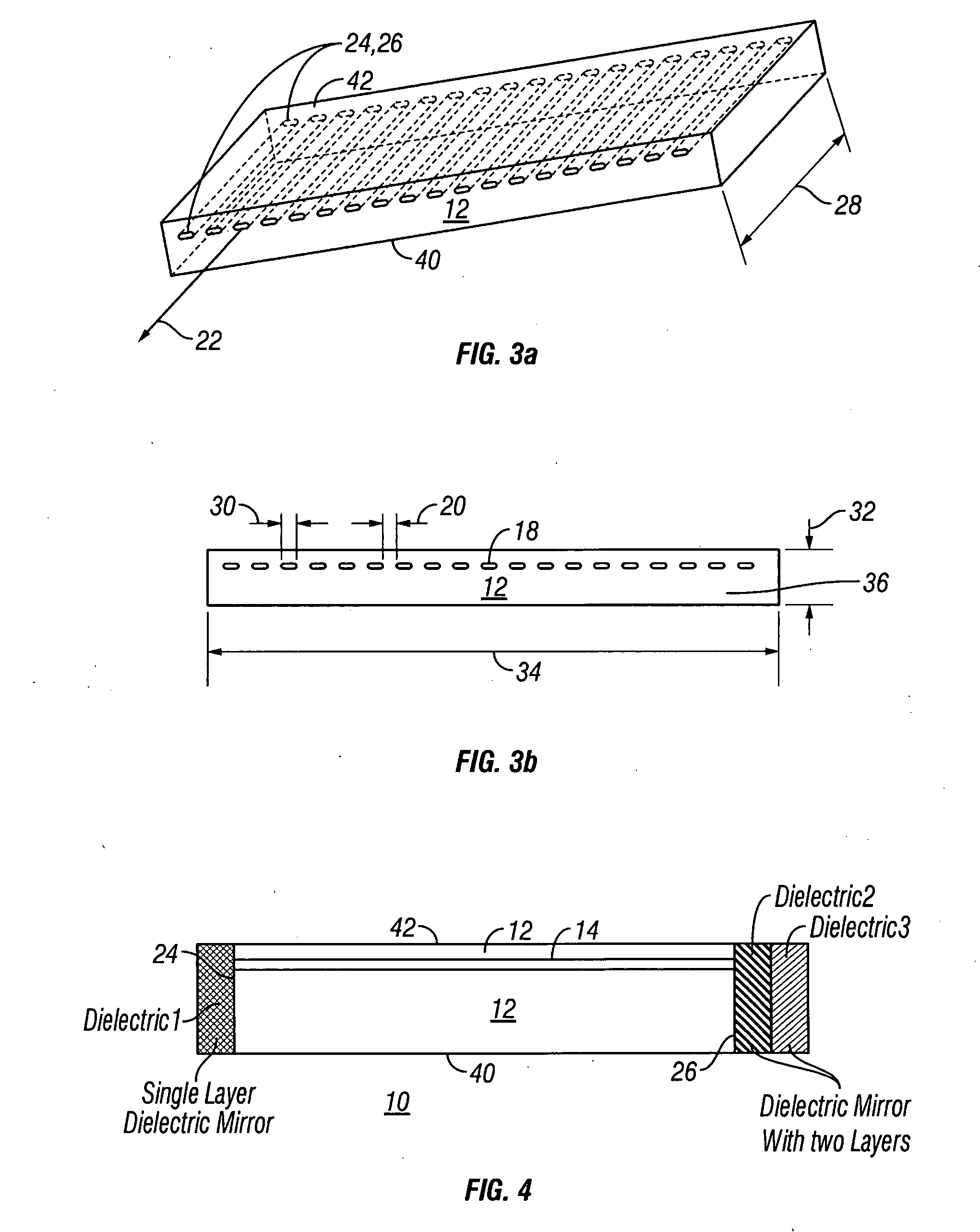Laser diode arrays with reduced heat induced strain and stress
a technology of laser emitter and diode array, which is applied in the direction of lasers, laser details, electrical equipment, etc., can solve the problems of high heat generation, poor reliability of laser diode array, and large spectral emission, so as to improve reliability, improve power degradation, and improve the homogeneity and spectral performance of optical beams. , the effect of improving the defect impa
- Summary
- Abstract
- Description
- Claims
- Application Information
AI Technical Summary
Benefits of technology
Problems solved by technology
Method used
Image
Examples
Embodiment Construction
[0051] Referring to FIGS. 3(a) through 9(d), various embodiments of the present a laser diode array, generally denoted as 10, of the present invention, are illustrated. In one embodiment, laser diode array 10 includes a layered semiconductor structure 12 with at least one active layer 14. A heat sink 16 is coupled to layered semiconductor structure 12. A plurality of laser emitters 18 are formed in the at least one active layer 14. Laser emitters 18 each have a spacing 20 that is selected to provide for a more uniform heat distribution. In one embodiment, laser diode array 10 produces an output beam 22.
[0052] Emitters 18 can be spatially confined and localized lasers inside layered semiconductor structure 12 and includes laser mirrors. The laser mirrors are defined by two crystal mirror facets 24 and 26. The distance between crystal mirror facets 24 and 26 is the cavity length 28 of the laser, which can define one dimension of laser diode array 10. Each laser emits radiation from a...
PUM
 Login to View More
Login to View More Abstract
Description
Claims
Application Information
 Login to View More
Login to View More - R&D
- Intellectual Property
- Life Sciences
- Materials
- Tech Scout
- Unparalleled Data Quality
- Higher Quality Content
- 60% Fewer Hallucinations
Browse by: Latest US Patents, China's latest patents, Technical Efficacy Thesaurus, Application Domain, Technology Topic, Popular Technical Reports.
© 2025 PatSnap. All rights reserved.Legal|Privacy policy|Modern Slavery Act Transparency Statement|Sitemap|About US| Contact US: help@patsnap.com



